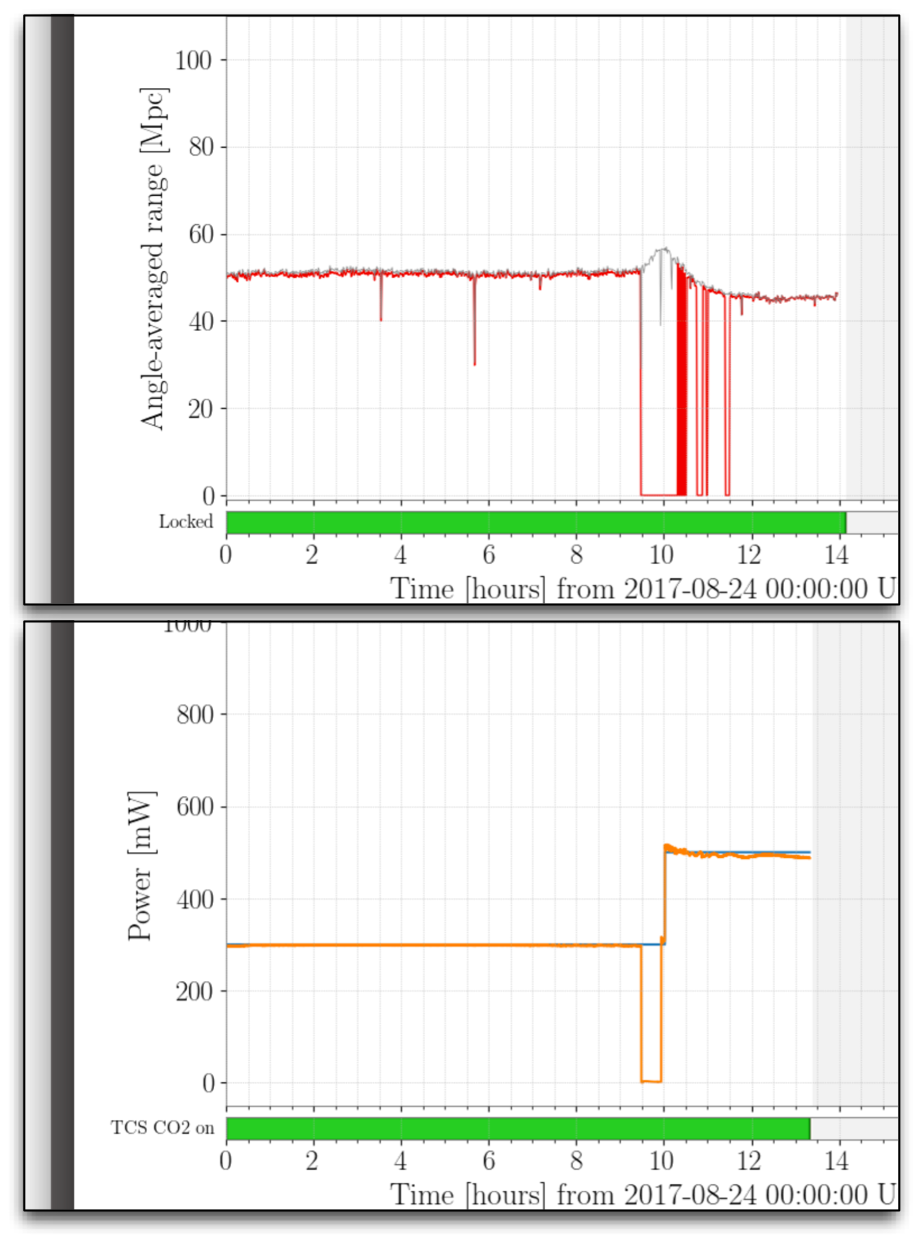I will be carrying out coincident hardware injections into L1 and H1, right after the O2 run ends. I've updated the schedule file and uploaded it to the injection svn, and checked it out onto the hardware injection machines. Here is the update to the schedule file:
1187734000 H1L1 INJECT_BURST_ACTIVE 1 1.0 config/Burst/Waveform/{ifo}/400_400_maxspin_hwinjcbc_1126259455_{ifo}.txt
1187734300 H1L1 INJECT_BURST_ACTIVE 1 0.5 config/Burst/Waveform/{ifo}/400_400_maxspin_hwinjcbc_1126259455_{ifo}.txt
1187734600 H1L1 INJECT_BURST_ACTIVE 1 1.0 config/Burst/Waveform/{ifo}/100_20_nospin_edgeon_hwinjcbc_1126259453_{ifo}.txt
1187734900 H1L1 INJECT_BURST_ACTIVE 1 0.5 config/Burst/Waveform/{ifo}/100_20_nospin_edgeon_hwinjcbc_1126259453_{ifo}.txt
1187735200 H1L1 INJECT_STOCHASTIC_ACTIVE 1 1.0 stoch/Waveform/SB_O2A_{ifo}.txt
These are four burst injections and one stochastic injection. The first one starts at 15:06:22 PDT.



























These injections went in successfully. Attached are the relevant sections of the INJ TRANS log.